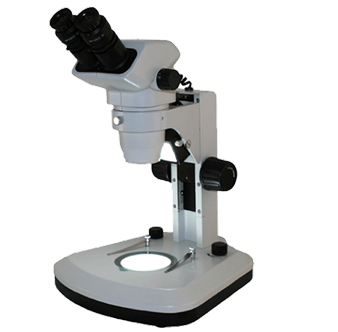Microscope Stage Micrometers
What is a Stage Micrometer
Microscope stage micrometers are indispensable tools that play a crucial role in scientific research, education, and various industries. These tiny but mighty devices hold the key to precise measurements and calibration in the microscopic realm. In this article, we delve into the fascinating world of microscope stage micrometers, exploring their significance, working principles, and diverse applications.
Understanding Microscope Stage Micrometers
Microscope stage micrometers are specialized calibration tools designed to measure and calibrate the movement of microscope stages. They consist of a glass slide or circular disc containing precisely etched lines or a grid pattern. These markings, often referred to as a micrometer scale, allow for accurate measurements of distances under the microscope.
How to Use a Stage Micrometer
A stage micrometer, also known as a calibration slide, is a specialized microscope slide that contains a precise scale with known measurements. It's used to calibrate microscope systems and to determine the magnification of microscope objectives. Here's a step-by-step guide on how to use a stage micrometer:
Step 1: Set Up the Microscope
Place the stage micrometer slide on the stage of the microscope. Make sure it's centered and properly positioned, allowing the microscope's objective lens to focus on the scale lines.
Step 2: Choose the Objective
Select the microscope objective you want to calibrate or determine the magnification for. Keep in mind that different objectives have different magnifications, and you'll need to calibrate each one individually.
Step 3: Focus the Microscope
Use the coarse and fine focus knobs of the microscope to bring the scale lines on the stage micrometer slide into sharp focus. Adjust the focus until the scale lines are clearly visible.
Step 4: Determine the Scale Factor
Look through the eyepiece and observe the scale lines on the stage micrometer slide. You will notice that the lines on the stage micrometer have a known spacing, often marked in micrometers (μm) or millimeters (mm). Count the number of divisions or lines that are visible across the field of view.
Step 5: Calculate the Magnification
Refer to the specifications provided by the manufacturer for the stage micrometer to find out the actual spacing between the scale lines. Divide this known spacing by the number of divisions you counted in the previous step. This calculation will give you the magnification of the microscope objective you're using.
Step 6: Repeat for Different Objectives
If you have multiple microscope objectives, repeat the process for each objective to determine their individual magnifications. Remember that the magnification of the microscope system can be calculated by multiplying the magnification of the objective by the eyepiece magnification, if applicable.
Step 7: Record the Results
Record the magnification values you've calculated for each objective. Keep this information for future reference and when performing microscopy tasks that require accurate measurements.
Using a stage micrometer is a crucial step in ensuring that your microscope provides accurate and reliable measurements. Regular calibration helps maintain the precision and integrity of your microscope system, making it an essential practice in various scientific and laboratory settings.
Working Principles
The principle behind microscope stage micrometers is based on the known dimensions of the scale etched onto the device. By comparing the scale on the micrometer to the specimen under examination, researchers can accurately determine the size, dimensions, or distance between objects in the microscopic field. This calibration process ensures the reliability and consistency of measurements.
Types of Microscope Stage Micrometers
Microscope stage micrometers are available in various configurations to suit different microscope types and applications. The most common types include linear scale micrometers, crossed-line micrometers, and grid pattern micrometers. Linear scale micrometers feature evenly spaced parallel lines, while crossed-line micrometers intersect at a 90-degree angle. Grid pattern micrometers consist of a series of squares or rectangles, ideal for quantifying object sizes or estimating the number of objects within a defined area.
Applications
Microscope stage micrometers find extensive use in diverse fields, including biology, medicine, metallurgy, materials science, and quality control. In biological research, they assist in precise measurements of cell sizes, counting bacteria or other microscopic organisms, and determining the dimensions of cellular structures. In metallurgy and materials science, stage micrometers are invaluable for analyzing grain size, assessing the thickness of coatings, and examining the features of microstructures. Furthermore, they are indispensable in quality control processes, ensuring accurate measurements in manufacturing, pharmaceutical, and semiconductor industries.
Calibration and Accuracy
Accurate calibration of the microscope reticle using the microscope stage micrometers is vital to maintain measurement precision. Periodic calibration ensures that the scale on the micrometer aligns correctly with the microscope's optics, guaranteeing reliable measurements. Calibration is typically performed using a reference standard, such as a known-sized object or a calibrated microscope slide. It is essential to follow the manufacturer's guidelines and consult experts to achieve accurate calibration results. A NIST certified stage micrometer meets NIST guidelines and has been calibrated and certified.
Microscope stage micrometers serve as indispensable tools in the microscopic world, providing scientists, researchers, and professionals with the means to achieve precise measurements and calibration. From biological research to materials science and quality control, these devices unlock a wealth of opportunities and insights. By understanding their significance, working principles, and applications, we can appreciate the role microscope stage micrometers play in advancing scientific discovery and technological innovation.

No eyepieces required
Visual Inspection Systems
These systems are perfect for quality control areas where a number of parts need examination throughout the day.
Shop Now
Same day response
Request a Quote
We build custom solutions tailored to fit your microscope needs. We respond to quote requests the same business day.
Submit Request



